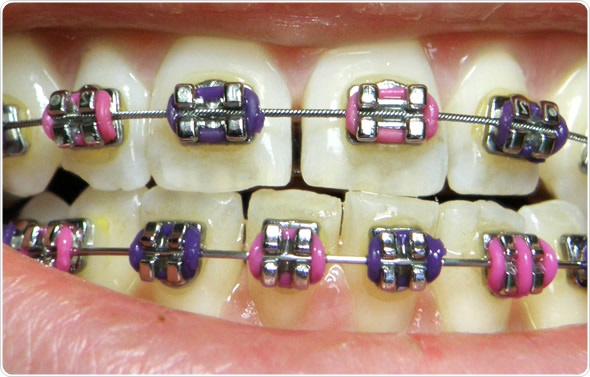What Establishes Cumming Braces and Aligners In Addition To Various Other Orthodontic Treatments
What Establishes Cumming Braces and Aligners In Addition To Various Other Orthodontic Treatments
Blog Article
Comprehensive Guide to Orthodontics Treatments for Correcting Oral Imbalances
In the world of orthodontics, the journey to achieving a perfectly aligned smile entails a myriad of procedures tailored to fix dental imbalances. From conventional dental braces to undetectable aligners and also medical alternatives, the field of orthodontics provides a variety of solutions to attend to differing levels of oral irregularities. Recognizing the complexities of each treatment, including their systems, benefits, and possible downsides, is important in making educated choices concerning one's orthodontic treatment. As we browse through the extensive guide to orthodontic treatments for remedying dental imbalances, the intricate information of each method will certainly unfold, clarifying the path towards a harmonious and functional dental alignment.
Orthodontic Procedures Summary

Regular adjustments and surveillance are important parts of orthodontic therapy to ensure progress is on track and to make any necessary alterations along the means. By going through orthodontic procedures, patients can not just accomplish a straighter smile yet likewise boost their general dental health and wellness and function.
Typical Braces: How They Function
When considering orthodontic treatments for dental imbalances, traditional dental braces stand out as a reliable technique for remedying teeth placing. Typical dental braces consist of brackets, cables, and bands that work together to apply constant pressure on the teeth, slowly relocating them right into the wanted placement. The braces are affixed to the teeth making use of an unique adhesive, and the cords are threaded via the braces. By readjusting the stress of the cords, orthodontists can regulate the instructions and pressure put on each tooth, assisting them right into appropriate positioning gradually.
As stress is applied to the teeth through the dental braces, the bone surrounding the teeth is improved to sustain the new tooth positions. People will need routine changes at the orthodontist's office to make certain the braces continue to use the appropriate stress for effective teeth activity.
Unseen Aligners: Benefits And Drawbacks
These clear, custom-made trays are virtually unnoticeable when used, making them an enticing alternative for people looking for a more aesthetically pleasing orthodontic treatment. Clients can eliminate the aligners prior to consuming or cleaning their teeth, minimizing the threat of food obtaining stuck in the device and streamlining the cleansing procedure.

Surgical Orthodontic Options
Surgical treatments in orthodontics present practical options for dealing with intricate dental imbalances that may not be effectively solved through standard orthodontic treatments. While unnoticeable aligners and typical braces can remedy many orthodontic problems, certain situations call for surgical treatment to achieve ideal outcomes. Surgical orthodontic options are normally recommended for serious malocclusions, significant jaw inconsistencies, and instances where the underlying bone structure requires modification to achieve appropriate positioning.
One common surgical orthodontic procedure is orthognathic surgical procedure, which involves repositioning the jaws to fix useful concerns such as difficulty speaking or eating. This surgical procedure is often carried out in partnership with an orthodontist that aids straighten the teeth before and after the procedure. Continue Surgical orthodontics may likewise include treatments to reveal influenced teeth, remove excess gum tissue, or reshape the jawbone to produce an extra harmonious face account.
Prior to taking into consideration medical orthodontic alternatives, patients go through a detailed analysis to establish the need and possible advantages of such treatments. invisalign. While surgical treatment read this post here may seem complicated, it can dramatically boost both the feature and aesthetic appeals of the smile in situations where traditional orthodontic treatments fail
Retainers and Post-Treatment Care

Failing to abide with post-treatment care guidelines can result in relapse, where the teeth progressively move back in the direction of their original settings. Consistent retainer wear, great dental hygiene, and routine oral examinations are crucial for preserving the outcomes achieved with orthodontic surgical procedure and guaranteeing the lasting stability of the remedied oral positioning.
Conclusion
In final thought, orthodontic treatments offer different alternatives for fixing oral imbalances. Traditional braces make use of steel brackets and cables to shift teeth into appropriate placement. Invisible aligners offer an even more very discreet alternative but may not appropriate for all instances. Surgical orthodontic options are available for a lot more extreme misalignments. Retainers are typically made use of post-treatment to maintain the new positioning. Generally, orthodontic treatments can effectively improve dental health and aesthetic appearance.
As we browse via the thorough overview to orthodontic treatments for dealing with oral imbalances, the intricate details of each technique will certainly unravel, losing light on the course toward a practical and harmonious dental alignment. - cumming kids dentist near me orthodontist
One of the most typical orthodontic treatments is the use of braces, which are composed of steel brackets and cables that apply mild stress to slowly shift teeth right into the preferred position.When considering orthodontic therapies for dental misalignments, typical dental braces stand out as a time-tested approach for remedying teeth positioning. In addition, unseen aligners may not be suitable for complicated orthodontic issues that call for more significant teeth motion, as they are generally recommended for light to moderate instances. Retainers are tailor-made orthodontic devices made to hold teeth in their remedied positions after the completion of orthodontic therapy.
Report this page